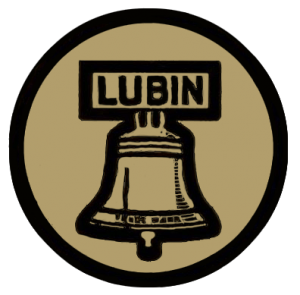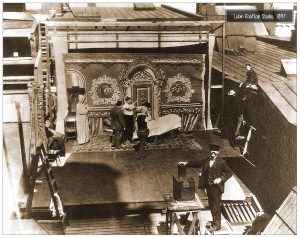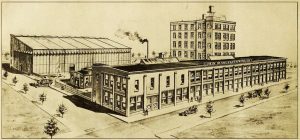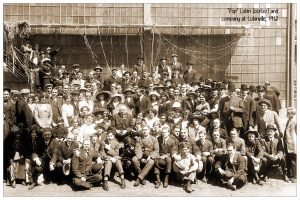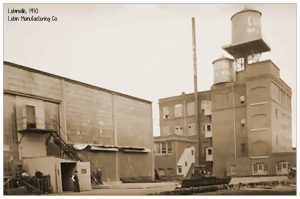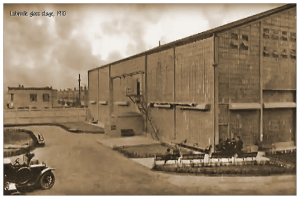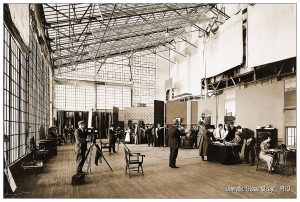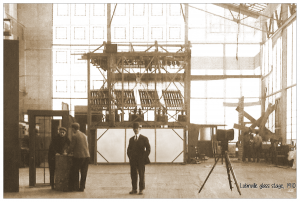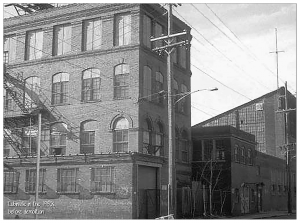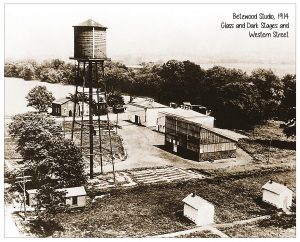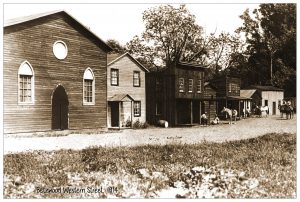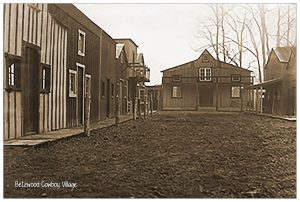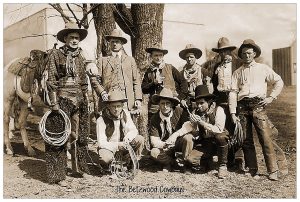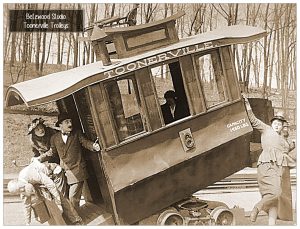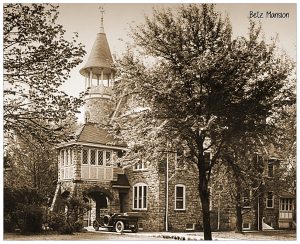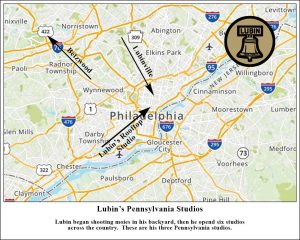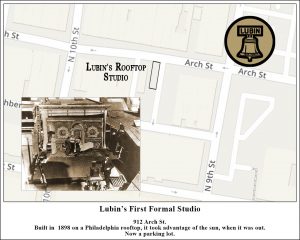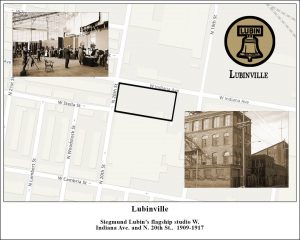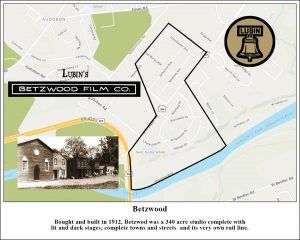Before there was Hollywood, there was Lubinville
Lubin Manufacturing Company
Pennsylvania's First and Biggest
click to enlarge
Related Pages:
- Philapelphia main page
- Siegmund Lubin
- Lubin Mfg. Co. main page
- Lubin Jacksonville
- Lubin's East Hollywood page
- Lubin Coronado
Philadelphia, Pennsylvania
Company active 1897-1917
Siegmund Lubin didn't start out to be one of the most powerful movie makers in the country. He just ended up that way.
"Pop" Lubin was an immigrant, like many of the early movie makers. He was born Zygmunt Lubszyński April 20, 1851 in what is now Warsaw, Poland and emigrated to the U.S in 1876. In 1881 changed his name to Lubin.
Lubin Goes Into the Movie Business
Lubin, an optometrist and photography enthusiast, became fascinated with movie equipment after seeing one of Thomas Edison's early cameras. He figured, with his knowledge of lenses and optics, that he could build his own camera/projector combination. He named is device his “Cineograph” and was moderately successful selling it to movie makers and theater owners. In 1896 he began distributing films for Thomas Edison and in 1897 started making his own movies. His first movie was shot in the backyard of his home at 1608 N. 15th Street in Philadelphia.
His first actual studio was a low cost rooftop at 912 Arch St.in Philadelphia (now a parking lot) built in 1897 where he constructed sets on a platform. Rooftop shooting was common among the early East Coast film makers as there was, on sunny days, plenty of sunshine and they could reposition the set as the sun moved across the sky.
The public was clamoring for more and more movies. Lubin took advantage of this and his movies proved to be very popular. In 1902 Lubin formally started his Lubin Manufacturing Company and built a chain of 100 movie theaters on the East Coast.
Lubinville
Active 1910-ca 1915
Lubin incorporated the business in 1909 and built a big, state of the art studio, know as Lubinville in, 1910 at 20th and Indiana Streets in Philadelphia. At the time it was the largest, most modern movie studio in the world. It had a 4 story office building and a huge glass stage where he could make 5 movies at one time. Lubin employed nearly 1,000 people at the Lubinville plant. Lubin could shoot as many as 5 movies simultaneously at the new studio.
The new, large plant was located on a big city lot at Indiana St. and 20th just off 19th St. It had a huge stage where Lubin installed the most sophisticated lighting system in the industry, and dressing rooms, editing rooms, and a laboratory for processing the film and a manufacturing plant for his cameras and projectors.
This marked a period of tremendous growth for the Lubin organization.
click to enlarge
Betzwood
Active 1912-ca 1915
In 1912 Lubin built his Betzwood Studio. He bought the Betz Estate, a 340 acre property near Valley Forge, Pennsylvania. It consisted of two "farms" with 19th century buildings and the palatial home of Philadelphia brewing magnate, John F. Betz.
Lubin used the existing building and built a huge facility with 3 stages and stages and outdoor sets. There was a Western street and a cowboy town for shooting his popular Westerns. Their main product was cowboy movies, and Betzwood was large enough to provide a variety outdoor locations.
The mansion and various other estate buildings were used for sophisticated dramas and comedies.
They also produced a very popular comedy series called the "Toonerville Trolleys" for which they built their own miniature railroad and trick railroad cars.
Other Lubin Locations
Jacksonville
Active 1912-1915
In 1912 Lubin was one of the first early movie makers to open a studio in Jacksonville, Florida, where he could take advantage of year round sun. He built his studio at 750 Riverside Avenue, this studio rivaled any in the country in size and modern equipment. Oliver Hardy got his start with Lubin at this studio. Lubin operated here until 1916, when he sold it to Mark Dintenfass, another early mogul, for his Vim Comedies.
Lubin Moves to Hollywood
Active 1912-1913
In 1912 Lubin bought a small parcel in East Hollywood an built one of Hollywood's first studios. He abandoned the lot in 1913. Over the years it changed hands many time. Competitors Essanay and Kalem bought the property. It became the venerable Monogram Pictures in 1942 and enlarged. In 1970 was bought and expanded by PBS station KCET. Today it is the Scientology Media Center.
Lubin in Coronado-San Diego County
Active 1915-1916
In 1915 Pop Lubin moved his company to Coronado Island near to what is now the Navel Air Station.
John D. Spreckels, owner of the Hotel Del Coronads owned this 9 acre parcel of land. He extended a lease to Lubin of one dollar per year as long as all members of the studio resided in Coronado. In turn Lubin invested $10,000 and built a studio on the waterfront. Spreckels' goal was to promote his hotel and tourism.
For two years, actors, directors, writers, and cameramen walked Coronado streets or queued up in lines waiting for the ferry. The San Diego History Center lists 43 movies produced by Lubin at his Coronado studios during this time. During a single month in 1916, Lubin’s Coronado studios churned out ten different movies.
The Decline of Lubin Manufacturing Company
An explosion and fire on June 13, 1914 destroyed the Lubinville's film vault, and with it all of his masters and negatives for all his movies. Without their library of movie masters to draw from they could not re-release their movies, a valuable source of revenue for all the early companies.
The same year saw the outbreak of WWI bringing European revenue to a halt. This was the beginning of the end for the company and by 1917 Lubin closed the doors on all of his studios and ceased operation.
Even their cost cutting measures: the sale of Betzwood and the move to California, could not save them. On Sept, 1, 1917 Siegmund Lubin closed the doors on his movie empire and he went back to optometry.
Lubinville lay abandoned for decades and the city finally tore it down in 1995. It is now just a vacant lot.
Lubin died on Sept., 11, 1923.







